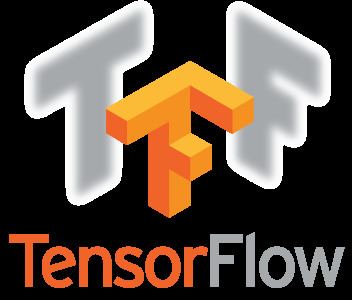Development status Active | Stable release 1.0 / 2017-02-15 | |
 | ||
Initial release November 9, 2015; 16 months ago (2015-11-09) Repository github.com/tensorflow/tensorflow | ||
TensorFlow is an open source software library for machine learning across a range of tasks, and developed by Google to meet their needs for systems capable of building and training neural networks to detect and decipher patterns and correlations, analogous to the learning and reasoning which humans use. It is currently used for both research and production at Google products, often replacing the role of its closed-source predecessor, DistBelief. TensorFlow was originally developed by the Google Brain team for internal Google use before being released under the Apache 2.0 open source license on November 9, 2015.
Contents
DistBelief
Starting in 2011, Google Brain built DistBelief as a proprietary, machine learning system, based on deep learning neural networks. Its use grew rapidly across diverse Alphabet companies in both research and commercial applications. Google assigned multiple computer scientists, including Jeff Dean, to simplify and refactor the codebase of DistBelief into a faster, more robust application-grade library, which became TensorFlow. In 2009, the team, led by Geoffrey Hinton, had implemented generalized backpropagation and other improvements which allowed generation of neural networks with substantially higher accuracy, for instance a 25% reduction in errors in speech recognition.
TensorFlow
TensorFlow is Google Brain's second generation machine learning system, released as open source software on November 9, 2015. While the reference implementation runs on single devices, TensorFlow can run on multiple CPUs and GPUs (with optional CUDA extensions for general-purpose computing on graphics processing units). TensorFlow is available on 64-bit Linux, macOS, and mobile computing platforms including Android and iOS.
TensorFlow computations are expressed as stateful dataflow graphs. The name TensorFlow derives from the operations which such neural networks perform on multidimensional data arrays. These multidimensional arrays are referred to as "tensors". In June 2016, Google's Jeff Dean stated that 1,500 repositories on GitHub mentioned TensorFlow, of which only 5 were from Google.
Tensor processing unit (TPU)
In May 2016 Google announced its tensor processing unit (TPU), a custom ASIC built specifically for machine learning and tailored for TensorFlow. The TPU is a programmable AI accelerator designed to provide high throughput of low-precision arithmetic (e.g., 8-bit), and oriented toward using or running models rather than training them. Google announced they had been running TPUs inside their data centers for more than a year, and have found them to deliver an order of magnitude better-optimized performance per watt for machine learning.
Features
TensorFlow provides a Python API, as well as somewhat less documented C++, Java and Go APIs.
Applications
Among the applications for which TensorFlow is the foundation, are automated image captioning software, such as DeepDream. Google officially implemented RankBrain on 26 October 2015, backed by TensorFlow. RankBrain now handles a substantial number of search queries, replacing and supplementing traditional static algorithm based search results.
